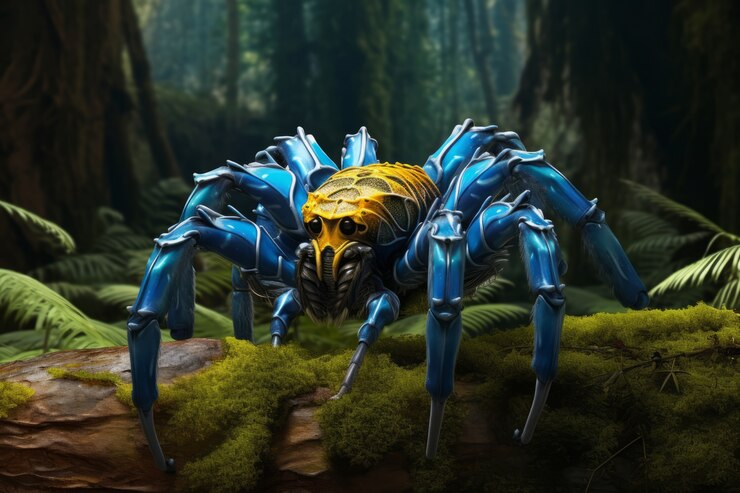In the world of 3D animation, creating lifelike creature movements is a blend of art and science. It’s about infusing digital characters with the essence of real-world creatures, bringing them to life with believable motion and behavior. Whether you’re working on a fantasy creature, a dinosaur, or a sci-fi alien, achieving realistic movements involves understanding anatomy, physics, and animation principles. In this comprehensive guide, we’ll explore how to animate realistic creature movements in 3D.
Understanding Creature Anatomy and Movement
The foundation of realistic creature animation lies in understanding the anatomy and movement of the creature you’re animating. This involves studying real-world animals and creatures that share similar characteristics, ensuring each animation frame accurately portrays the nuances of their natural movements.
-
Research and Reference: Begin by gathering references. Watch videos, study documentaries, and observe real-life animals. Pay attention to their skeletal structure, muscle movement, and how they interact with their environment.
-
Anatomy Study: Study the anatomy of the creature. Understand the bone structure, joints, and how muscles move and contract. This knowledge will help you create a believable rig and animation.
-
Movement Analysis: Analyze the movement patterns. How does the creature walk, run, jump, or fly? Understanding these patterns will inform your animation process, ensuring that movements are fluid and natural.
Creating a Rig
A well-constructed rig is essential for animating realistic creature movements. The rig acts as the skeleton of your digital character, allowing you to manipulate its movements.
-
Building the Skeleton: Start by creating a skeletal structure that mimics the creature’s anatomy. Ensure that joints are placed accurately to allow natural movement.
-
Adding Controls: Add control points to the rig. These controls will enable you to manipulate the creature’s movements. Place controls at key points such as the head, spine, limbs, and tail.
-
IK and FK Systems: Implement Inverse Kinematics (IK) and Forward Kinematics (FK) systems. IK is useful for limb movements, such as walking or running, while FK is ideal for more fluid movements like tail swaying or neck motion.
-
Skinning the Model: Once the rig is complete, skin the model to the skeleton. This process binds the 3D model to the rig, allowing the model to move with the skeleton.
Animation Principles
Animating realistic creature movements requires a deep understanding of animation principles. These principles, established by Disney animators, are crucial for creating believable and appealing animations.
-
Squash and Stretch: This principle adds a sense of weight and flexibility to your creature. Use squash and stretch to emphasize the force of movements, such as a cheetah’s muscles contracting and expanding while running.
-
Anticipation: Before a major movement, add a smaller preparatory motion. For example, before a lion pounces, it crouches down. Anticipation builds realism and helps convey the creature’s intentions.
-
Staging: Ensure that your creature’s movements are clear and readable. Position your camera and animate in a way that highlights the action. Good staging directs the viewer’s attention to the most important part of the movement.
-
Follow Through and Overlapping Action: Realistic movements don’t stop abruptly. When a creature comes to a halt, parts of its body, like the tail or ears, continue to move slightly. This principle adds fluidity and realism to your animation.
-
Slow In and Slow Out: Creatures don’t move at a constant speed. They accelerate and decelerate. Apply this principle to add more natural motion to your animations.
-
Arcs: Most natural movements follow an arc rather than a straight line. Ensure that your creature’s movements follow curved paths to add realism.
Keyframe Animation
Keyframe animation is the process of defining key positions for your creature at specific points in time. The software interpolates the frames in between, creating smooth transitions.
-
Setting Key Poses: Begin by setting key poses for your creature. These poses should capture the essence of the movement. For a walking cycle, key poses might include the contact, passing, and high point positions.
-
In-Betweens: Once the key poses are set, create in-between frames to smooth out the transitions. This process, known as “tweening,” ensures that the movement flows naturally.
-
Adjusting Timing: Timing is crucial in animation. Adjust the timing of keyframes to match the creature’s weight and speed. Use the graph editor to fine-tune the motion curves, ensuring that movements are fluid and natural.
Motion Capture
Motion capture (mocap) technology can be a powerful tool for creating realistic creature animations. By capturing the movements of real actors or animals, you can apply these motions to your 3D creatures.
-
Setting Up Mocap: Set up a motion capture system with cameras and sensors. Ensure that the environment is suitable for capturing the desired movements.
-
Capturing Movements: Record the movements of an actor or animal. For a more realistic capture, use props or costumes that mimic the creature’s anatomy.
-
Cleaning Data: Motion capture data can be noisy. Use software to clean up the data, removing any unwanted artifacts or jittery movements.
-
Applying to Rig: Apply the cleaned motion capture data to your creature’s rig. Make necessary adjustments to ensure that the movements fit the creature’s anatomy.
Adding Details
To enhance realism, add secondary movements and details that bring your creature to life.
-
Facial Animation: If your creature has a face, animate facial expressions and lip-sync for speech. Use blend shapes or joint-based systems to create realistic expressions.
-
Muscle Simulation: Add muscle simulations to mimic the contraction and expansion of muscles. This adds an extra layer of realism, especially for creatures with exposed muscles.
-
Secondary Movements: Animate secondary elements like tails, ears, and fur. These elements should move in response to the primary actions, following the principles of follow-through and overlapping action.
Using 3D Animation Services
Creating realistic creature animations can be complex and time-consuming. Leveraging professional 3d animation services can help streamline the process and ensure high-quality results.
-
Expertise and Experience: Professional 3d animation services have experienced animators who specialize in creating lifelike creature movements. Their expertise ensures that your animations are top-notch.
-
Advanced Tools: Animation studios have access to advanced tools and software that can enhance the quality of your animations. These tools include motion capture systems, muscle simulation software, and high-end rendering engines.
-
Collaboration: Working with a professional team allows for collaboration and feedback. This iterative process helps refine the animation, ensuring that it meets your vision and standards.
-
Efficiency: Professional animation services can handle large projects efficiently. They have the resources and manpower to meet tight deadlines without compromising on quality.
Conclusion
Animating realistic creature movements in 3D is a challenging but rewarding endeavor. It requires a deep understanding of anatomy, animation principles, and the technical aspects of rigging and keyframe animation. By combining these skills with advanced tools and professional 3d animation services, you can bring your digital creatures to life with stunning realism.
From studying real-world references to creating detailed rigs and adding nuanced animations, each step in the process contributes to the overall believability of your creature. Whether you’re working on a blockbuster film, a video game, or an animated series, mastering the art of creature animation opens up endless creative possibilities.
Remember, the key to realistic animation lies in the details. Pay attention to the subtle movements, the weight shifts, and the secondary actions that make your creature feel alive. With dedication and practice, you’ll be able to create animations that captivate and inspire your audience.




